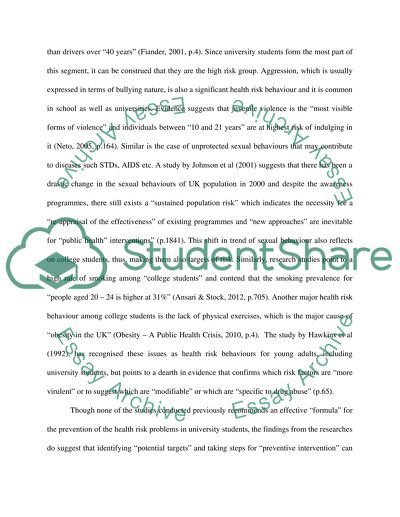Cite this document
(“Health Education/ Health risk behaviour among univesrity studnets Dissertation”, n.d.)
Health Education/ Health risk behaviour among univesrity studnets Dissertation. Retrieved from https://studentshare.org/health-sciences-medicine/1474074-health-education-health-risk-behaviour-among
Health Education/ Health risk behaviour among univesrity studnets Dissertation. Retrieved from https://studentshare.org/health-sciences-medicine/1474074-health-education-health-risk-behaviour-among
(Health Education/ Health Risk Behaviour Among Univesrity Studnets Dissertation)
Health Education/ Health Risk Behaviour Among Univesrity Studnets Dissertation. https://studentshare.org/health-sciences-medicine/1474074-health-education-health-risk-behaviour-among.
Health Education/ Health Risk Behaviour Among Univesrity Studnets Dissertation. https://studentshare.org/health-sciences-medicine/1474074-health-education-health-risk-behaviour-among.
“Health Education/ Health Risk Behaviour Among Univesrity Studnets Dissertation”, n.d. https://studentshare.org/health-sciences-medicine/1474074-health-education-health-risk-behaviour-among.


